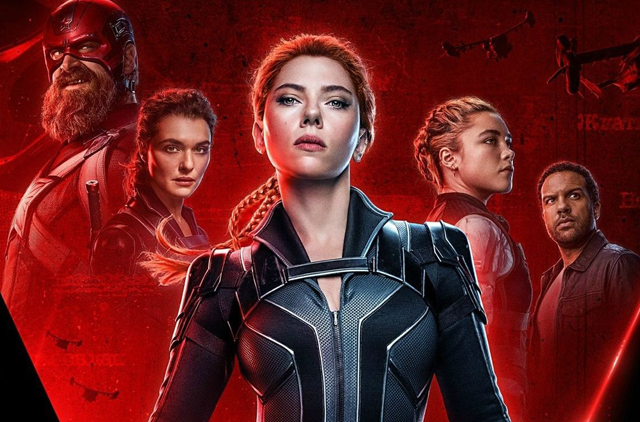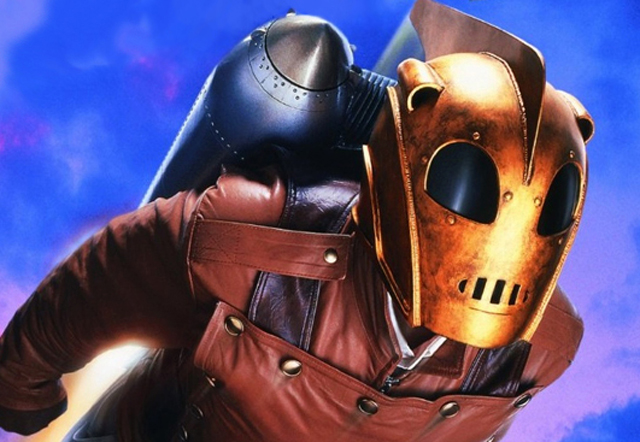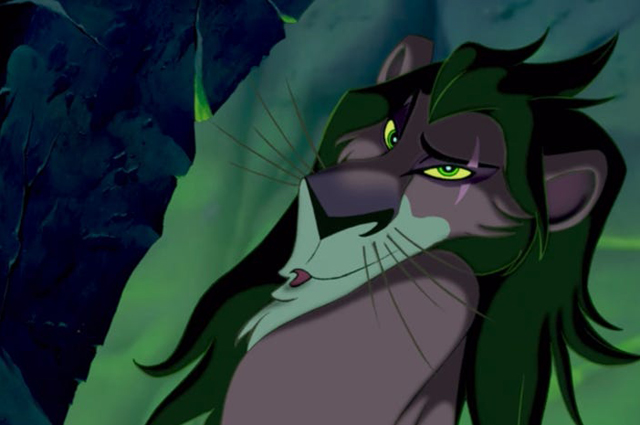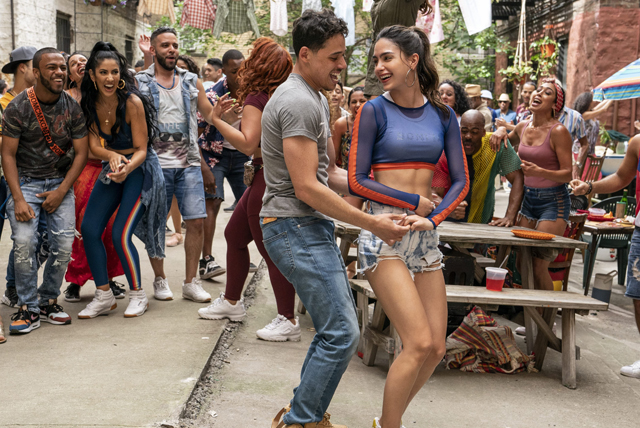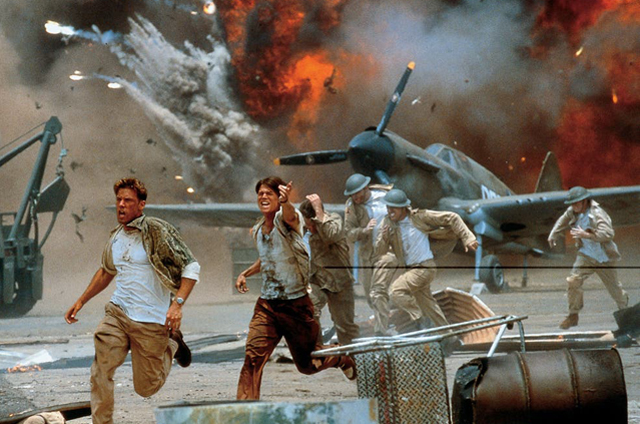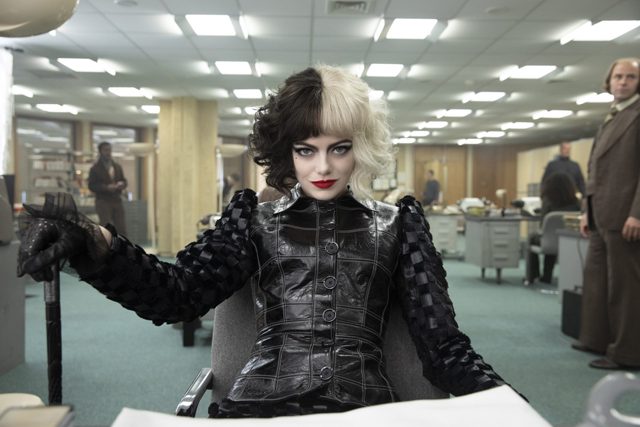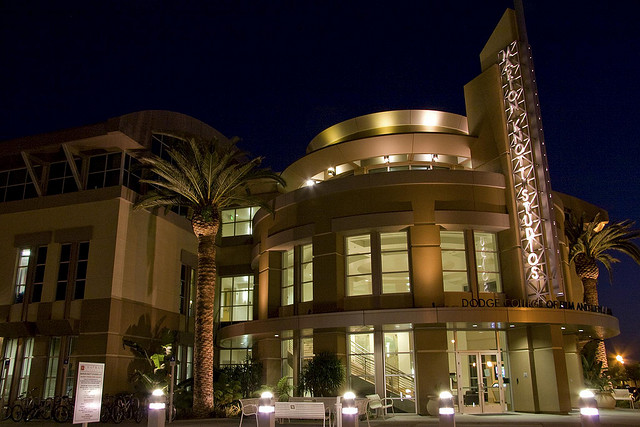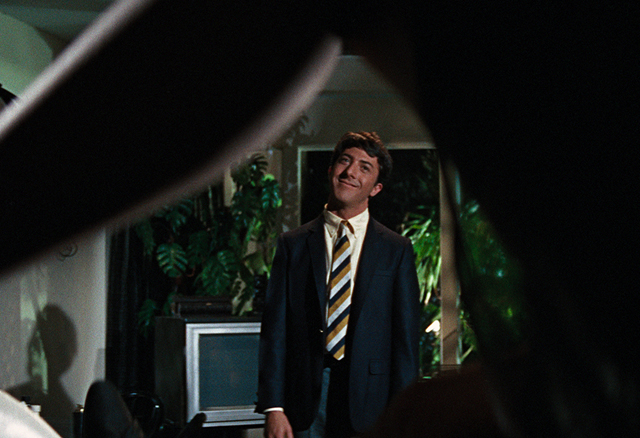
In the years following Hollywood’s Golden Age, a new crop of filmmakers rose up that not only possessed the skills to make movies of their own, but were also keen on the importance and historical significance of the movies that had influenced them. For the first time, a generation of filmmakers were making movies that were reflective of the movies that had come a generation prior. Many new filmmakers not only sought to replicate the kinds of movies that they had grown up with, but they also began to deconstruct them as well, viewing old tropes through newer sensibilities. You can see this through the works of French New Wave auteurs like Jean-Luc Goddard and Francois Truffaut as their early films took heavy inspiration from pre and post-War film noir. And then there are the many directors like Sam Peckinpah and Sergio Leone who breathed new life into the Western, with far more attention paid to the horrific violence that really did mark the Old West. You can also see how old sci-fi serials of the past were reimagined by a filmmaker like George Lucas into a groundbreaking gamechanger called Star Wars (1977). It was a generation that made a profound impact on cinema for several decades, and brought the industry into a whole different identity than where it started. Even still, there is a consistent line of new filmmakers standing on the shoulders of those that had come before them, and using their influence to inspire what was to come next. So, it’s interesting to see what kind of new generation would follow in the footsteps of the first generation fully influenced by the cinema of the past. It turns out that the cycle keeps moving along, as each new generation strives to replicate the kinds of movies that left a deep impression on them. Particularly with a generation as rebellious and experimental as those that had risen up in the 60’s and 70’s, it was going to be interesting to many scholars of cinema how the next generation would develop in it’s wake. Indeed, beginning within the early 90’s, a new crop of filmmakers did begin to emerge and change the face of cinema again, and one of the most noteworthy of those new voices was a fresh young rebel named Quentin Tarantino.
Born in Knoxville, Tennessee but raised in the suburbs of Los Angeles, Tarantino seemed born destined to be a filmmaker. Spending much of his early years going to movie theaters in the heart of Hollywood, Tarantino not only grew an appreciation for the movies that the studio system was putting out, but also the ones that were being made on the fringes as well. Tarantino is an unashamed fan of what has been deemed over time as “grindhouse” cinema. These were movies made on the slimmest of budgets, often dealing with taboo subjects and containing many button pushing elements, and were almost always showing in cheap seat theaters that were not always well kept. These were movies that challenged the mainstream, and Tarantino ate them up with pride. Whether they were Spaghetti Westerns, Blaxploitation, or just the average raunchy comedy, these movies spoke to the still developing mind of Tarantino during these formative years. Before embarking on a filmmaking career, Tarantino worked in a video store, where his deep knowledge of cinema made him a natural source of recommendations to customers. Through the encouragement of some industry friends, Quentin began working on screenplays that he hoped to one day sell and help him break into the film industry that he had such an affinity for. In those early days, he would craft the stories that eventually formed the foundations of True Romance (1993) and From Dusk ’til Dawn (1994). In the meantime, he earned a little extra money as a part time actor, including playing an Elvis impersonator on an episode of The Golden Girls. The residuals for that gig alone help him secure enough money to start development on his first feature as a director, Reservoir Dogs (1991). Though modest in budget and scope, Dogs nevertheless revealed Tarantino’s unique voice and it immediately put him in the spotlight. The meteoric rise continued with his second feature, Pulp Fiction, which won the Palm d’Or at Cannes and helped Tarantino earn his first Oscar for the Screenplay. Since then, he has remained a Hollywood fixture, and without a doubt the most influential filmmaker of his generation. In this article, I’m going to examine all the noteworthy things about his movies that stand out and define him as a filmmaker. And no, feet will not be one of the filmmaker trademarks I’m going to spotlight. So, let’s put Quentin Tarantino in the Director’s chair and see what makes his movies both noteworthy and entirely unique.
1.
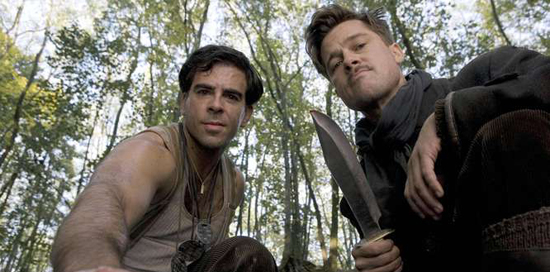
UNFLINCHING VIOLENCE
Even in his earliest movies, it’s readily apparent that Tarantino is not one to sugarcoat onscreen violence. Throughout the entirety of Reservoir Dogs, actor Tim Roth’s character is bleeding out from a gunshot to his gut, the result of a botched robbery he played a part of. And that’s one of the least gruesome acts committed in the movie. Another character, Mr. Blonde (played memorably by Michael Madsen) cuts the ear off of a hostage he has taken. Tarantino drifts the camera away when the gruesome act is committed, but you do see the aftermath, grotesque ear cavity and all. This unflinching look at violent acts extends all the way through his filmography. Even the movies he wrote and didn’t direct (True Detective, From Dusk ’til Dawn and 1994’s Natural Born Killers) have the same focus on violence. But at the same time, it isn’t violence without reason or purpose. Tarantino purposely wants you to feel something viscerally when you see it on screen. A lot of the reason he puts it in is movies is due to the influence he took from the grindhouse movies of the past. Just like how those movies pushed the envelope with their depictions of on screen violence, making liberal use of blood packs and gory make-up to drive home the fact that these movies were outside of the mainstream and proud of it. Some would see it as exploitive and there have been complaints from some that Tarantino glorifies violence. But he has pushed back on that claim many times, stating how essential the violence is in his movies. One of the things that you commonly see in his movies is how the violence usually erupts when you least expect it. The ending of Once Upon a Time ..in Hollywood (2019) for instance is a particularly shocking outburst of violence, that’s both uneasy and hilariously abrupt. The montage of a gory car wreck in Death Proof (2007) also showcases how Tarantino pushes the envelope to get a reaction out of his audience. Other films that aren’t quite as gory, like Inglorious Basterds (2009) or Django Unchained (2012) still have a fair share of their movie centered around acts of violence, so it’s something that is present throughout his work. He’ll agree, these movies aren’t for everybody, but at the same time, he holds true to the fact that violence in his movies should never be done as a compromise.
2.
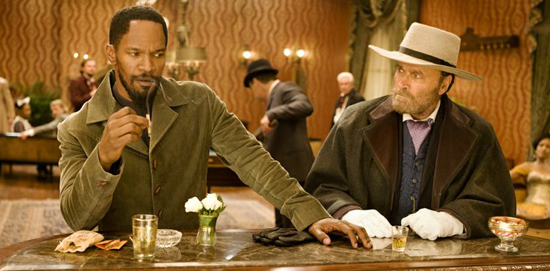
GREAT, QUOTABLE DIALOGUE
Tarantino by trade is a film director, but he will probably tell you that his foremost talent is in screenwriting. There is no doubt that the thing that most people take away from his movies is just how fresh and memorable the dialogue in it is. Quentin’s voice really is what distinguishes him the most, and it’s what has set him apart from most of his contemporaries. There have been many independent filmmakers in his wake that have tried to imitate the Tarantino style, but almost all of them have failed. No one writes like Tarantino, and I think that it’s because he puts so much of his own mind into the things he writes. Quentin’s special talent is his use of non-sequiturs in his dialogue, which is the characters talking about stuff that means nothing to the overall plot, but at the same time, reveals so much about the characters themselves. The back and forth discussion about McDonald’s menu items in France between Samuel L. Jackson’s Jules and John Travolta’s Vincent in Pulp Fiction is a perfect example. Talking about the “Royale with Cheese” ultimately is just two old colleagues wasting time on a way to a job, but from that discussion, we learn so much about who these two are. Tarantino loves his character building monologues, and it’s especially fulfilling for him when he can base so much of his character interactions on film nerd discussions that he’s probably had with his own friends over the years. The opening of Reservoir Dogs I almost guarnatee is based on a real discussion he’s had at parties over the meaning of Madonna’s discography, and it makes it all the more interesting that this is how Tarantino chooses to introduce these characters to us. It’s not all pop culture though. Quentin has often said one of his most favorite things he has ever written is the opening scene of Inglorious Basterds, which introduces the fearsome Colonel Hans Landa (played spectacularly by Christoph Waltz), and it’s easy to see why. It’s one of the most unnerving introductions of a villain in cinema history, and Quentin brilliantly conveys the true menace of the character not through actions but through words alone. Even the way Tarantino structures his movies, often in a non-linear way, is done only in the way that makes sense when he does it. There have been so many copycats, but Tarantino the writer is still an unmatched original.
3.
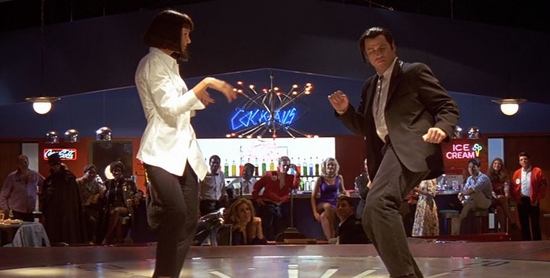
UNFORGETTABLE NEEDLE-DROP SOUNDTRACKS
On top of Tarantino’s cinema influences, it’s also easy to see what kinds of music left a deep impression on him as he grew up. No doubt, listening to the top 40 radio stations in the Los Angeles area stuck with him as throughout all of his movies, he likes to underscore his scenes with a carefully chosen selection of classic hits. Sometimes he’ll include a universally known song, or he may use a deep cut. Part of the fun of watching his movies is not knowing what you’ll hear next, and being surprised by the ingenious selection. Even more interesting is when he subverts a scene by setting the mood with an unexpected track. The already mentioned ear slicing torture scene in Reservoir Dogs is made all the more noteworthy by the fact that Stealers Wheel’s “Stuck in the Middle With You” plays through it all; with Michael Madsen dancing unnervingly to the beat. Even when working in a bygone time period, Quentin will throw in an anachronistic choice like David Bowie’s “Cat People” into Inglorious Basterds or Jim Croce’s ” I Got a Name” into Django Unchained, and it will still make complete sense to the story he’s telling. The man just has an ear for music, and knowing which popular songs work best in the stories that he’s telling. Some music that otherwise had fallen into obscurity over the years sometimes have been revived thanks to it’s placement in one of his movies. The now iconic use of Dick Dale’s “Misirlou” for the opening credits of Pulp Fiction cemented that guitar heavy instrumental in pop culture, and is often used whenever anyone does a parody of Pulp Fiction in any other medium. He doesn’t just use any kind of pop music; it’s music from a specific period in time that was influential to Tarantino in his formative years. It’s another part of his own character that he injects into his movies and helps to make them uniquely his own. We are listening to the soundtrack that he himself would hear if he were living in the world of these characters.
4.
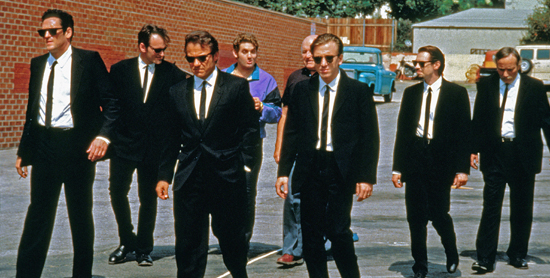
DEEPLY, DEEPLY FLAWED CHARACTERS
There is definitely one thing to say about the characters in Tarantino movies and that’s for the most part nearly all of them should be judged on a morally relevant scale. Because his movies often deal with characters living in a violent, crime ridden world, it’s often hard to say if there truly is a pure soul in any of his movies. This is definitely true with movies like Reservoir Dogs and Pulp Fiction. Because of Pulp Fiction’s non-linear, anthology style plot, you’ll actually find instances where characters that are heroes in one plot thread turn out to be villains in another. Another example of judging characters based with moral ambiguity is with the Basterds brigade in Inglorious Basterds. In normal circumstances, we would be looking at these characters, led by Lt. Aldo Raine (Brad Pitt), as war criminals, but their atrocities are painted in a favorable light because they are committing them against the Nazis. It’s probably the only movie in history where we are actually rooting for suicide bombers. Even still, Tarantino makes sure that there are characters with righteous intentions behind their acts of violence. This includes the Bride (Uma Thurman) in the Kill Bill duology, or Shoshanna (Melanie Laurent) in Inglorious Basterds, or Jackie Brown (Pam Grier) in Jackie Brown (1997). Just as violence is a part of the fabric within all of Tarantino’s movies, so is the impact it has on the characters, and it asks us the audience to consider the moral implications along the way. Yes, in many cases, these are bad people doing bad things, but in the context of these stories, it asks us to question if there is a morally justified reason to use violence in order to seek justice. It could be that, or sometimes it’s just Tarantino showing how messed up a world we live in, like putting a sympathetic spin on a character named Cliff Booth (Pitt again) in Once Upon a Time…in Hollywood who probably, almost certainly killed his own wife.
5.
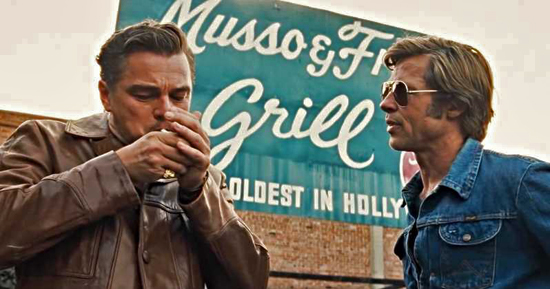
CINEMA ON A PEDASTAL
It’s an almost unmistakable fact in watching Tarantino’s movies that he is a man who is in love with the art of cinema. Whether it’s referencing movies throughout his different films, or actually incorporating them as an element of the plot, the movies are always a fixture of his filmography. You can see the Tarantino’s cinephile side come out strong in moments like the Jackrabbit’s Diner scene in Pulp Fiction, where the waiters and waitresses are all dressed like 50’s pop culture icons, and John Travolta’s Vincent Vega knows the difference between Jane Mansfield and Marilyn Monroe. Cinema also plays a key role in the plot of Inglorious Basterds, as the big climatic finale is set within a movie premiere. More recently, Quentin devoted an entire movie as an ode to a bygone era in the dream factory itself with Once Upon a Time…In Hollywood, even going so far as to actually recreate the look of Hollywood Boulevard in the 1960 by redressing the facades of the real place to make them exactly as they word decades before. Even apart from that, Tarantino loves to honor past generations who were a major influence on him by including them in his movies. He helped to bring back long overlooked actors like Laurence Tierney, Robert Forester, and Pam Grier and gave them important roles that helped to revitalize their long dormant careers. And even outside of his films, Tarantino has been a passionate champion for traditional cinema. He refuses to work with digital cameras, working exclusively with good old fashioned film stock, and he even has experimented with using long out of use film formats, like the ultra wide Panavision 70 on his movie The Hateful Eight (2015), a format that hadn’t been used in over 50 years. He only is so adamant about the kinds of equipment he uses on set because it’s his way of honoring the history of filmmaking that means so much to him, and he wants to preserve it as much as he can. His passion for physical film media even extends to presentation, as he became the owner of the New Beverly Cinema, a single screen venue south of Hollywood, where movies are shown solely with actual film stock. Just this year, Tarantino added the legendary Vista Theater in the Los Feliz neighborhood to his collection, which shows that his commitment to preserving the theatrical experience, with a strong emphasis on real, physical film, remains strong to this day.
There is little doubt that years from now the name Quentin Tarantino will remain a prominent one in the annals of film history. Carving out his own, uncompromised niche in the Hollywood community, he has become one of the rare, unvarnished talents in the whole of the industry. Very few filmmakers have the kind of creative freedom that he has managed to secure for himself, and that’s mainly because Tarantino has been especially effective in endearing audiences to his unique style and consistently managing to bring people back to the cinemas solely based on his own brand alone. Everyone now knows what they are getting with each new Tarantino movie, and he hasn’t failed to deliver yet. In fact the only thing that may get in his way is his own self. For years, Tarantino has stated that he is quitting directing after his 10th film, which should be the one that comes next. It seems like a premature time to hang things up, but Quentin insists that he’s rather go out at ten films, than continue on and lose his edge like he’s seen happen to so many other directors that he loves. I personally don’t buy that, and I think he’s being a tad too hard on himself thinking that mediocrity is his ultimate destiny if he continues to make movies into his twilight years. It’s where his obsession with movie history ultimately becomes a hinderance on his own self worth. I hope that Tarantino sees it a different way in his later years, and I believe that a premature retirement are not in the cards for him. He’s too talented, and I for one don’t believe that talented people just stop cold turkey. The creative bug will catch him again and he’ll make more than 10 movies in his career. As for now, we have a pretty eclectic body of work to appreciate from the last 30 years, and most of them have stood the test of time and can still be viewed just as well today. What will be interesting is if another Tarantino like individual will rise up in the years ahead whose style owes itself in part to that of Quentin Tarantino. Like how Quentin has used his movies to honor the ones who came before him, I’m sure that some future filmmaker will do the same, and Quentin will see that as it’s own reward. He knows he stands on the shoulders of giants of the past, and I’m sure that the greatest joy in his life is knowing that the next generation that will redefine cinema will be the ones that stand upon his.
